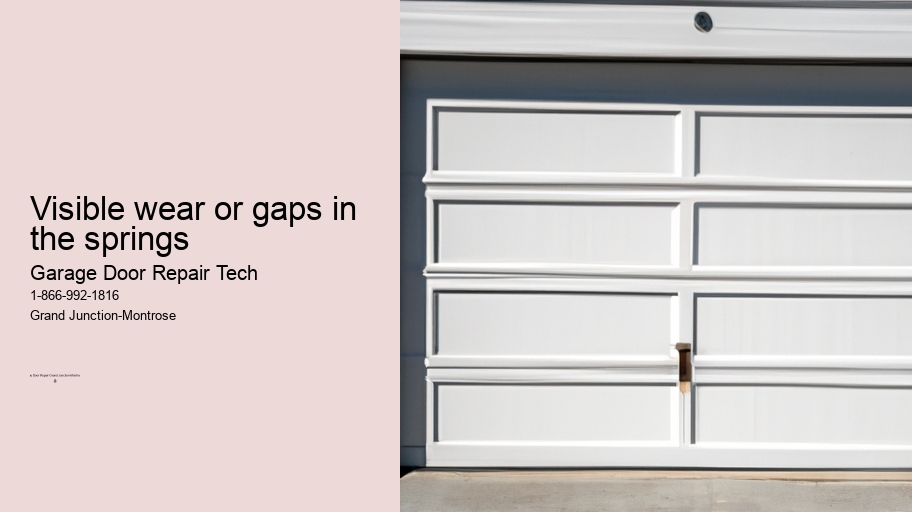
Springs are an essential component in garage doors, playing a crucial role in their proper functioning. These (amazing) mechanisms counterbalance the weight of the door, allowing for smooth and effortless opening and closing. In fact, without springs, it would be nearly impossible to operate a garage door manually! Springs are responsible for bearing the heavy load that the door exerts on its tracks, preventing any unfortunate accidents or injuries.
Visible wear or gaps in the springs can indicate potential issues with your garage door system. When springs start showing signs of wear and tear or develop gaps between coils, they become less effective at supporting the weight of the door. This can lead to imbalances and uneven distribution of forces when opening or closing the garage door. As a result, you may notice difficulties in operating your door smoothly or even encounter unexpected stops midway through its movement.
It is crucial to address any visible wear or gaps in your garage door springs promptly. Ignoring these signs can lead to more severe damage to other parts of your garage door system, including cables, rollers, and even the opener itself! Additionally, worn-out springs increase the risk of sudden spring failure while operating the door. This can cause significant property damage and pose serious safety hazards to anyone nearby.
Therefore (as a matter of fact), regular inspection and maintenance of your garage door springs are highly recommended. By doing so (in reality), you can identify any early signs of wear or gaps and have them repaired or replaced before they escalate into bigger problems. Professional technicians possess the expertise needed to assess spring conditions accurately and take appropriate actions accordingly.
In conclusion (to sum up), maintaining well-functioning springs is vital for ensuring a safe and smoothly operating garage door system! Don't neglect those visible wear marks or gaps; get them checked out by professionals as soon as possible (indeed)!
Visible wear or gaps in the springs can be a telltale sign of potential problems with your furniture. When (you're) inspecting your springs, keep an eye out for any (noticeable) signs of wear or gaps that may have developed over time. These signs can indicate that the springs are no longer providing adequate support or may even be on the verge of breaking (!). Neglecting these signs can lead to further damage and discomfort.
One common sign of visible wear is when (there's) noticeable sagging in the seat cushions. This can occur when the springs start to lose their tension and become worn out over time. Another indication is if you feel any unevenness or lumps when sitting or lying down on the furniture. These irregularities suggest that some springs might have shifted out of place or have gaps forming between them.
Gaps in the springs should not be ignored, as they can cause further damage if left unaddressed. When examining your furniture, make sure to pay attention to any spaces between the springs where they should normally be tightly connected. If you notice any gaps, it means that the integrity of the spring system has been compromised, which could result in a complete failure if not fixed promptly.
To avoid costly repairs and potential injuries (!), it's essential to address visible wear or gaps in the springs as soon as possible. You may want to consider contacting a professional upholsterer who specializes in furniture repair to assess and fix the issue properly. Remember, proper maintenance is key to ensuring long-lasting comfort and functionality of your beloved furniture!
In conclusion, visible wear or gaps in the springs are clear indicators of potential problems with your furniture's spring system. Be vigilant when inspecting for any signs such as noticeable sagging, unevenness, or lumps while using your furniture. Don't overlook these warning signs; repairing them promptly will help maintain both comfort and safety (!). So don't wait, take action and ensure your furniture springs back to its best shape!
When it comes to visible wear or gaps in garage door springs, there are several potential causes that can lead to this issue. These causes include lack of maintenance, excessive use, and the effects of weather conditions on the springs. (Oh no!) Neglecting regular maintenance tasks such as lubricating the springs and inspecting them for signs of damage can result in accelerated wear over time. Similarly, if a garage door is used frequently without proper care, the springs may weaken and develop gaps. (Whoops!)
Furthermore, weather conditions can also play a role in causing wear or gaps in garage door springs. Extreme temperatures, such as intense heat or freezing cold, can put additional stress on the springs and cause them to deteriorate more quickly. Additionally, exposure to moisture or humidity can lead to rust formation, weakening the springs and contributing to their eventual failure. (Uh-oh!)
To avoid these issues with your garage door springs, it is important to take proactive measures in their maintenance and care. Regularly inspecting the springs for any signs of wear or gaps is crucial. If you notice any visible damage or abnormalities (such as cracks), it is essential to address them promptly by contacting a professional technician who specializes in garage door repairs. They will be able to assess the extent of the problem and provide suitable solutions (like replacing worn-out parts) for restoring your garage door's functionality.
In conclusion,(to sum up) visible wear or gaps in garage door springs can be caused by factors such as lack of maintenance, excessive use without proper care, and adverse effects from weather conditions. By regularly maintaining your garage door's components and promptly addressing any issues that arise, you can prolong its lifespan while ensuring its safe operation.(Yay!) Remember,(Don't forget) seeking professional help when needed is always advisable for complex repairs!
Visible wear or gaps in the springs can pose serious risks and dangers to your safety. When springs are damaged, it may lead to unpredictable movements and instability of the equipment(like). Such issues can greatly increase the likelihood of accidents occurring during use.
One potential risk associated with visible wear or gaps in the springs is the possibility of sudden collapse or failure of the equipment(finally). If the springs are worn out or have gaps, they may not be able to provide sufficient support and stability (uh-oh). This could result in a sudden loss of balance and potentially cause you to fall or injure yourself(you know).
Moreover, damaged springs can also lead to uneven weight distribution on the equipment (well). This imbalance can affect how smoothly it operates and increase the chances of tipping over(eh?). Imagine using a trampoline with worn-out springs; it could become an unsteady platform that throws you off balance (definitely).
In addition to these immediate risks, continued use of equipment with damaged springs can exacerbate existing problems(yeah!). Over time, neglected spring damage might worsen, leading to further instability and compromised performance(really?). Ignoring visible wear or gaps in the springs is not only unsafe but could also result in costly repairs down the line(oh no!).
Therefore, it is crucial to regularly inspect your equipment for any signs of visible wear or gaps in the springs(likewise). By addressing these issues promptly, you can ensure your safety while using them(honestly!). Remember, prevention is always better than dealing with unfortunate consequences later on(don't ya think?).
To conclude(well), taking immediate action when you notice visible wear or gaps in your equipment's springs is vital for avoiding potential risks and dangers. Don't put off inspections and repairs; prioritize your safety above all else(indeed!). With well-maintained springs, you'll enjoy a safer and more enjoyable experience during various activities(great!). So, stay alert and take care of your equipment to avoid any unnecessary mishaps, accidents, or injuries(you got it!).
Inspecting and assessing visible wear or gaps in springs is an essential task to ensure their optimal performance and longevity. To carry out this process effectively, one must follow a set of steps (oh boy!). Let's dive right into it, shall we?
Firstly, it is crucial to visually examine the springs for any signs of wear or gaps. Take a good look at the surface of the springs, paying close attention to (um) irregularities such as cracks, dents, or deformations. If you spot any of these issues, mark them down for further evaluation.
Next, gently touch the springs with your fingertips while applying slight pressure. By doing so, you can detect any hidden gaps or loose parts that may not be easily visible to the naked eye (hmm). If you feel any unusual movements or separations between the coils (yikes!), make sure to note them down as well.
Moving on (well then), use a measuring tool such as a caliper to assess the dimensions of the springs accurately. Measure their length, diameter, and thickness precisely. Any significant deviations from the manufacturer's specifications could indicate potential wear or damage.
In addition (by golly), check if there are any excessive noises coming from the springs when they are put under pressure or during movement. Unusual sounds like squeaking or grinding might suggest worn-out components that require immediate attention.
Lastly (wowzers!), consider performing a load test on the springs if needed. Apply an appropriate amount of weight onto them and observe how they respond under stress. If there is excessive bending or sagging beyond acceptable limits (!), it indicates weakened structural integrity.
To sum up our discussion (finally!), inspecting and assessing visible wear or gaps in springs demands careful observation and attention to detail (!!). By following these steps diligently, one can identify potential issues early on and take necessary measures for maintenance or replacement (!!!).
So remember folks: don't skip the inspection process, as it is crucial for keeping your springs in tip-top shape (you got this!).
When it comes to garage door maintenance, one must not overlook the importance of inspecting the springs regularly. Visible wear or gaps in the springs could be indicative of potential issues that require attention. If left unaddressed (oh no!), these problems can lead to more serious malfunctions or even accidents.
So, what are the available options for garage door spring replacement when confronted with visible wear or gaps? Well, fear not my friends, for there are several solutions at your disposal!
Firstly (By the way), you might consider seeking professional help if you lack experience in handling garage door repairs. Garage door springs can be quite dangerous to work on without proper knowledge and tools. Hiring a trained technician will ensure that the replacement is done safely and efficiently.
Alternatively (On the other hand), if you possess some handyman skills and want to take matters into your own hands, you can attempt a DIY approach. However, please exercise extreme caution as mishandling garage door springs can result in severe injury or damage to property.
Now (Anyway), let's discuss the process of replacing worn-out or gapped garage door springs. Start by identifying whether you have torsion springs or extension springs - each requires different replacement techniques. Consult your owner's manual or seek guidance from an expert to determine the appropriate type of spring for your specific garage door model.
Next (Moving on), measure the dimensions of your existing spring(s) accurately before purchasing replacements. This ensures compatibility and prevents further complications down the line. Remember, incorrect measurements may lead to improper functioning of your garage door system.
After obtaining suitable replacement springs, carefully remove the old ones using proper tools such as winding bars and clamps. Be sure to release any tension in torsion springs cautiously as they store a significant amount of energy!
Once removed, install the new springs following manufacturer instructions precisely - this safeguards against future failures and enhances overall performance.
Lastly (To wrap things up), test the functionality of your newly replaced springs by opening and closing the garage door a few times. Observe for any unusual noises, imbalances, or irregular movements. If all seems well, congratulations (Yay!) - you've successfully tackled the visible wear or gaps in your garage door springs!
In conclusion, whether you opt for professional assistance or embark on a DIY adventure, addressing visible wear or gaps in garage door springs is crucial for maintaining a functional and safe garage door system. Remember to prioritize safety and accuracy throughout the process. Now go forth and conquer those spring replacements with confidence!
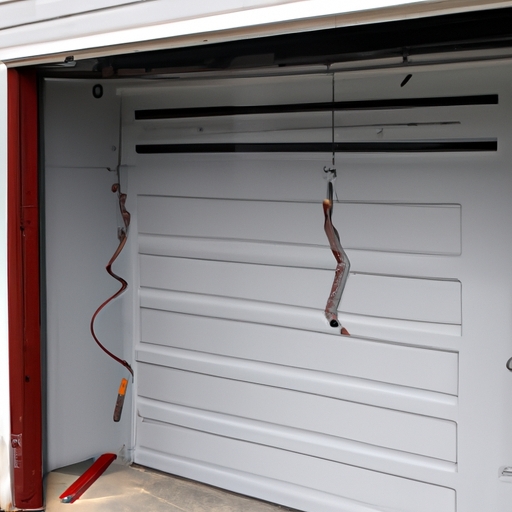
Curious About DIY Home Improvements?. Find Out How to Safely Replace Your Garage Door Spring with Expert Tips!
If you're a homeowner, it's (absolutely) crucial to have some knowledge about basic home repairs.
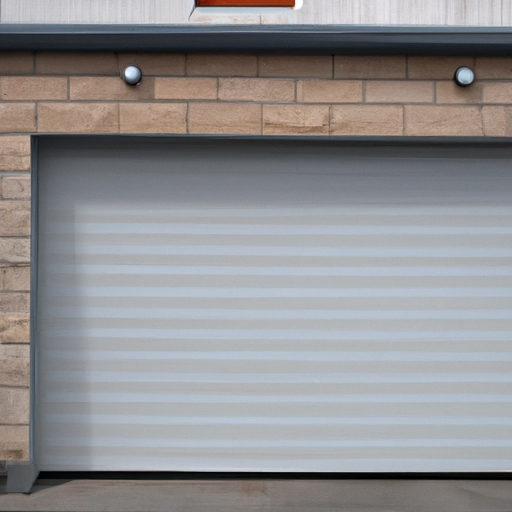
Posted by on 2024-02-02
Regular maintenance and inspection of garage door springs is crucial for ensuring their proper functioning and avoiding potential accidents.. Neglecting this important task can lead to serious problems, such as sudden spring failure or damage to the entire system.
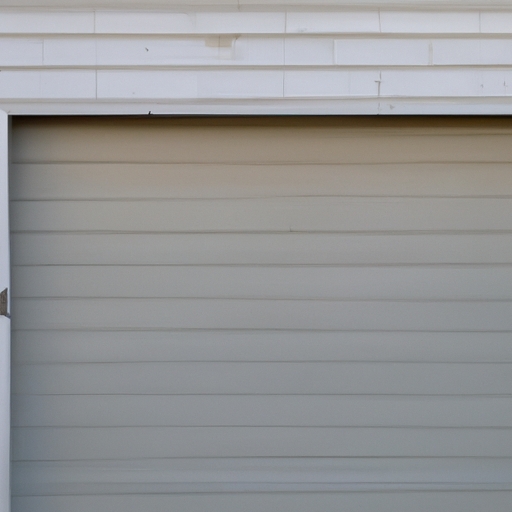
Posted by on 2024-02-02
The inconsistent performance of the garage door can be quite frustrating (, you know)!. Sometimes it works just fine, opening and closing smoothly.
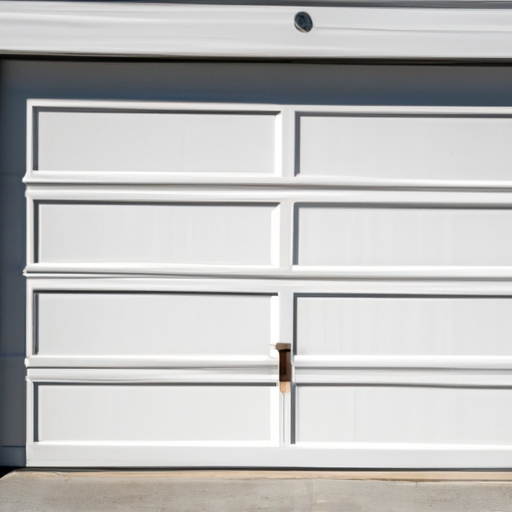
Posted by on 2024-02-02
When it comes to garage doors, there are various types of springs that can be used for their operation.. Each type has its own set of advantages and disadvantages!

Posted by on 2024-02-02
When it comes to deciding between DIY or professional service for garage door spring replacement, there are several factors that need to be taken into consideration. (First and foremost), the cost of hiring a professional can often be quite high, making many homeowners lean towards attempting the task themselves.. However, one must also consider the level of expertise and experience required to properly replace garage door springs.
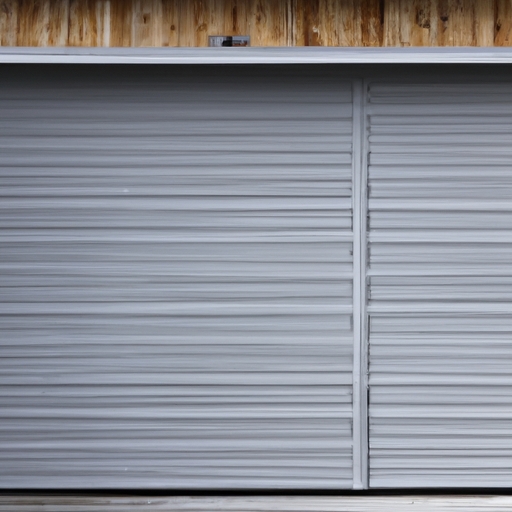
Posted by on 2024-02-02